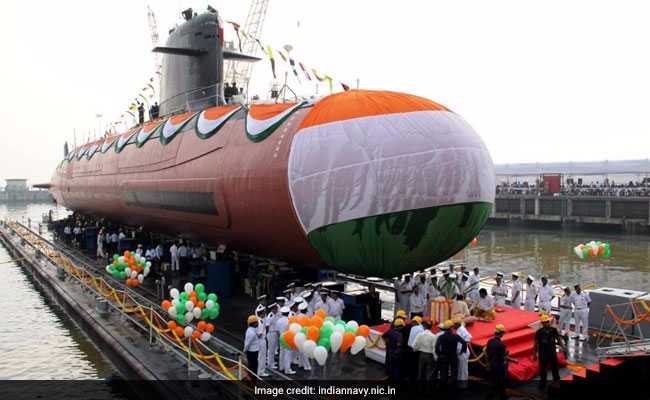
In line with the nautical tradition, nearly two decades after first Indian submarine Kalvari was decommissioned on May 31, 1996, it has been "re-incarnated" as the first of the six Scorpene class submarine and was delivered to Indian Navy in September. President Ramnath Kovind recently said on Twitter the scheduled commissioning of Kalvari in her new avatar will complete the "Kalvari to Kalvari" journey.
Here Is Your 10-Point Cheatsheet On India's Deadliest Submarine INS Kalvari
INS Kalvari has been named after fierce deep sea predator Tiger Shark. This is a step forward for the Indian Navy for building a strong underwater fighting force. India has just about 15 submarines, a mix of Russian-origin Kilo class vessels and German HDW submarines. China has four times as many.
The indigenously-built attack submarine, delivered after a four-year delay, is the first of six French-made Scorpene submarines made as a part of Rs 236 billion project awarded to the government-run defence shipyard, Mazagon Dock Shipbuilders Ltd. and France's Naval Group, formerly known as DCNS group. The order, placed in 2005, had targeted to reach the first submarine to the Navy by 2013.
The first Kalvari, which was commissioned into the Indian Navy on December 8 1967, was decommissioned on May 31, 1996 after three decades of service. Remembering the first time Indian flag was hoisted on Kalvari in 1967, President Ramnath Kovind, tweeted, "It was on this day (December 8) in 1967 that the Naval Ensign and the National Flag were hoisted on the first Indian Naval Submarine, Kalvari." He mentioned, "In the past 50 years, 25 submarines have been in commission at various points," and also added that "2017 is being commemorated as the Golden Jubilee of the Indian Navy's Submarine Arm."
Earlier this month, Vice Admiral Girish Luthra, Flag Officer Commanding of the Western Naval Command, told reporters that Kalvari underwent around 120 days of extensive sea trials and tests for various equipment.
Six Scorpene-submarines are built by Mazagon Dock Limited in Mumbai as a part of Project-75 of the Indian Navy. The remaining five boats of the Project 75 would be delivered by the yard to the Navy by 2020.
Kalvari went to the sea for the first time on May 1, 2016. The submarine was sailed out at about 10 am "under her own propulsion for the first sea trial, off the Mumbai coast and during the sortie," Indian Navy said in a statement.
Kalvari boasts of state-of-the-art features such as superior stealth and the ability to launch a crippling attack on the enemy using precision guided weapons. The attack can be launched with torpedoes, and as tube launched anti-ship missiles, while it is underwater or on surface. According to Indian Navy, Scorpene Submarine is designed to operate in all theatres including the Tropics.
Kalvari is also equipped with Weapons Launching Tubes (WLT), and it can carry weapons on board which can be easily reloaded at sea, through special handling and loading equipment.
This year, on March 2, Indian Navy successfully conducted the maiden firing of an Anti-Ship missile from the first of the indigenously built Kalvari class submarines, during a test firing in the Arabian Sea. The missile successfully hit a surface target at extended ranges during the trial firing. This missile launch was considered significant for enhancing the Indian Navy's sub-surface warfare capability.
All six Kalvari class submarines will be equipped with this anti-ship missile, which has a proven record in combat and will provide the submarines the ability to neutralise surface threats at extended ranges.

